Dateline – December 13, 2019 – Denton, Texas
How do vultures decide where they want to roost? Who can say?
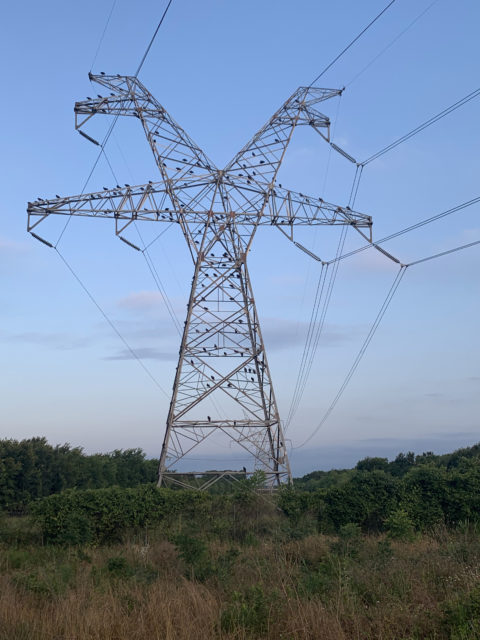
Ordinarily, a large congregation of vultures might be found high in the trees of swampy Trinity River bottomlands, or those of its many tributaries. Alternatively–and in my experience, more commonly here in DFW–vultures prefer to roost communally on transmission towers located in remote utility right of ways. Often these sizable roosts will be located next to a landfill–the big black birds seem to have a real preference for the lovely aroma of methane gas.
I recently stumbled across vulture roost that’s a little bit different. This large congregation on the campus of Texas Woman’s University is one of the most unusual I have yet to discover in the Dallas/Fort Worth metroplex. I’m puzzled by the appeal of this location on a busy campus and surrounded by high-traffic thoroughfares. Other than height, this dormitory building does not seem to be an obvious choice for these bird. Nonetheless, vultures are attracted to this spot in droves.
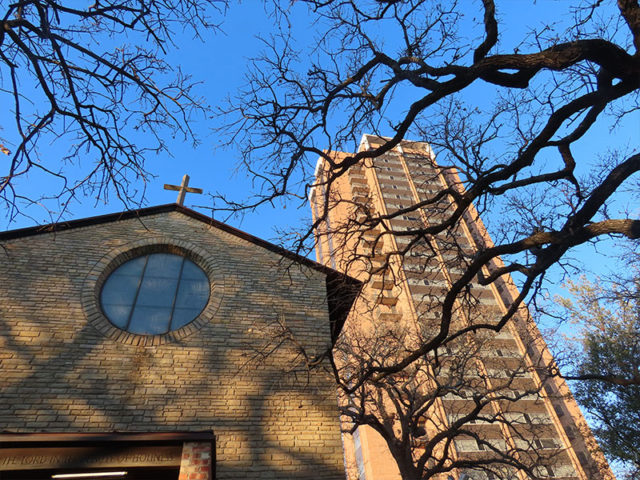
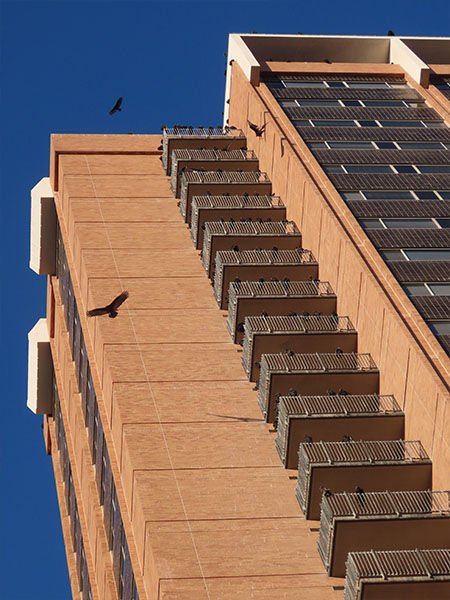



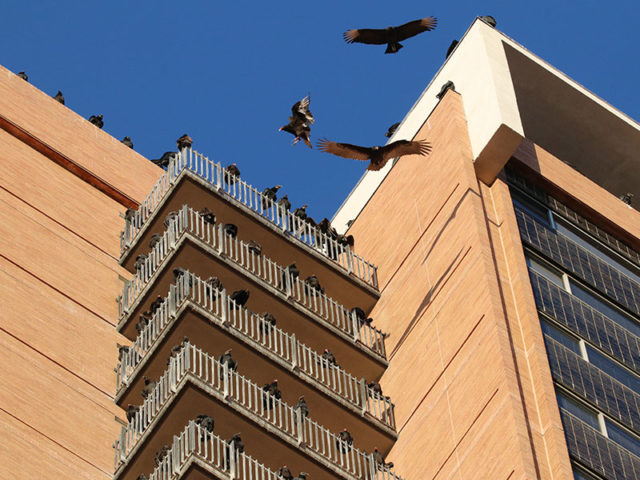
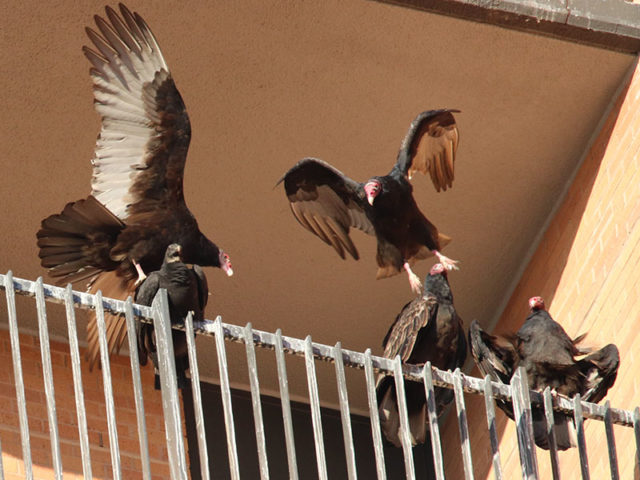
We have two types of vultures here in the metroplex–the Black Vulture and the Turkey Vulture. Both kinds can be found at this communal roost. Fortunately, they are relatively easy to differentiate…. Turkey Vultures have pink heads and white-tipped beaks. Their feathers are deep brown in color. Turkey Vultures can be identified in flight by the light-colored feathers running along the entire length of the trailing edge of their wings. Black Vultures–as the name implies–are nearly uniformly dark in color. In the air, a Black Vulture can be recognized by the light colored feathers located only at the ends of each wing.

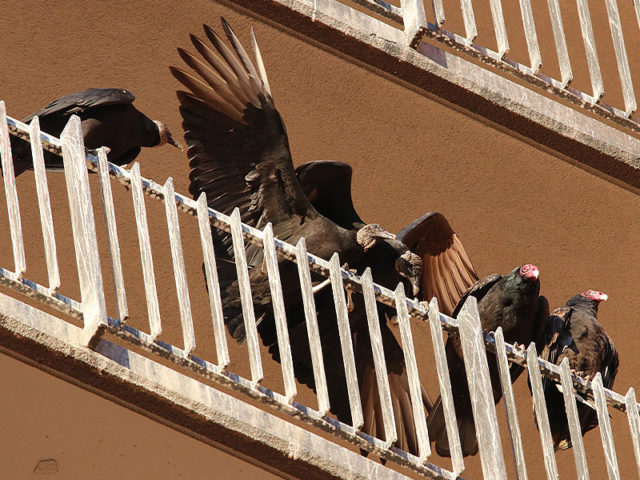

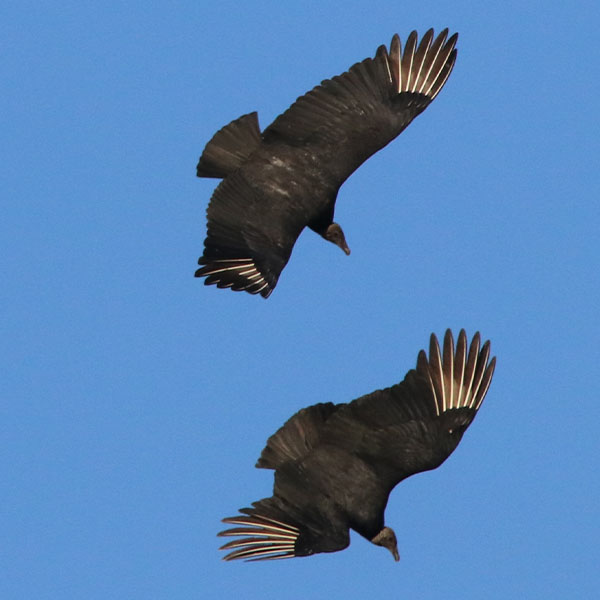

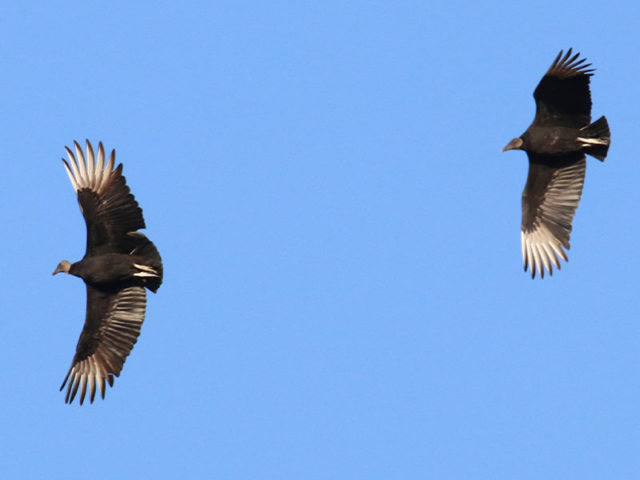
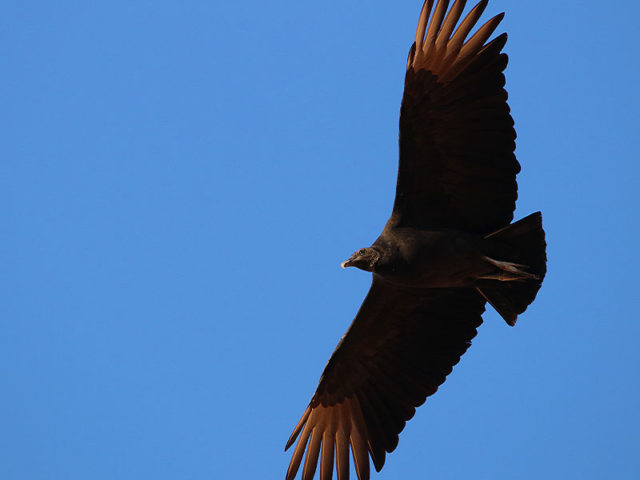
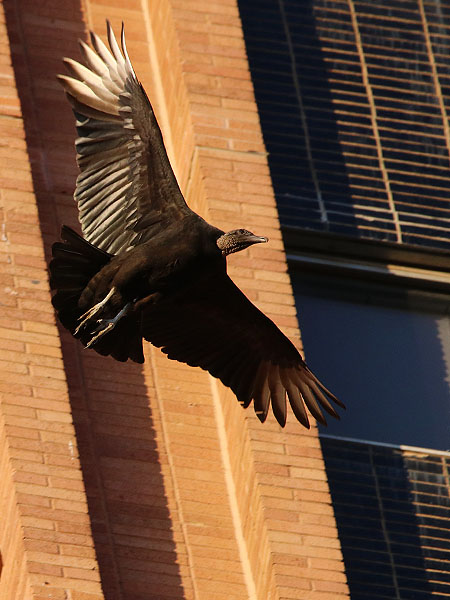
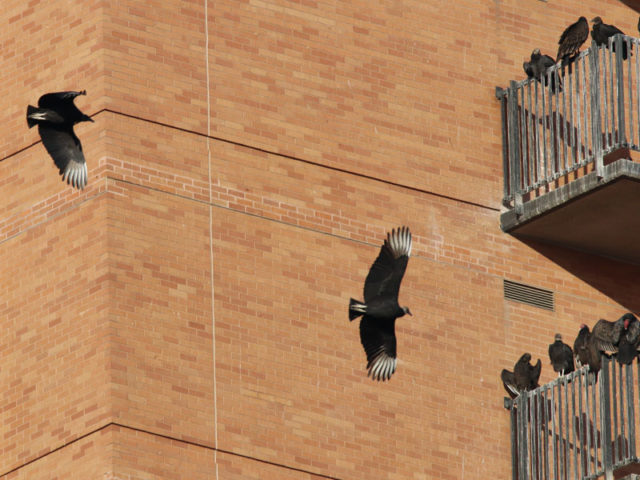
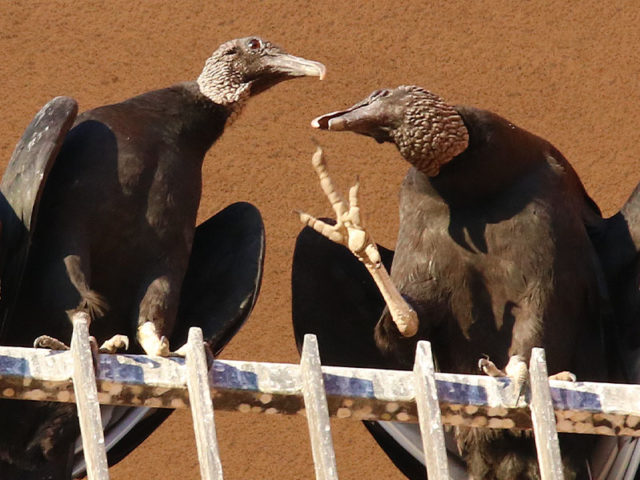
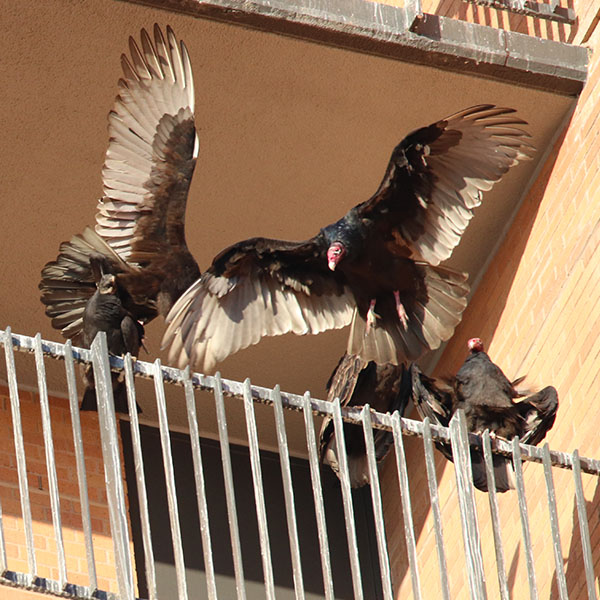
light colored feathers on the tail and trailing edge of the wings
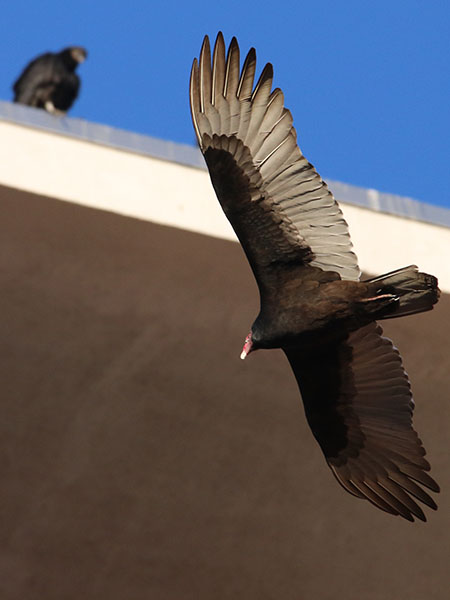
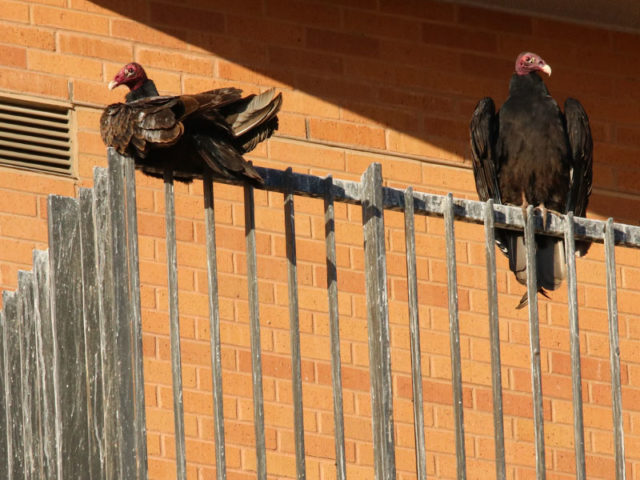
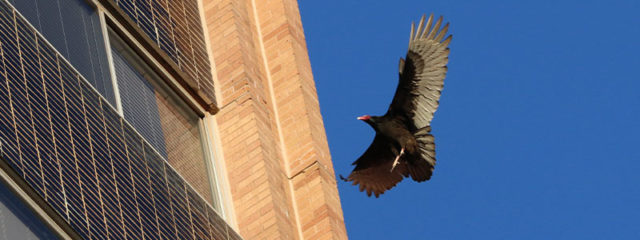

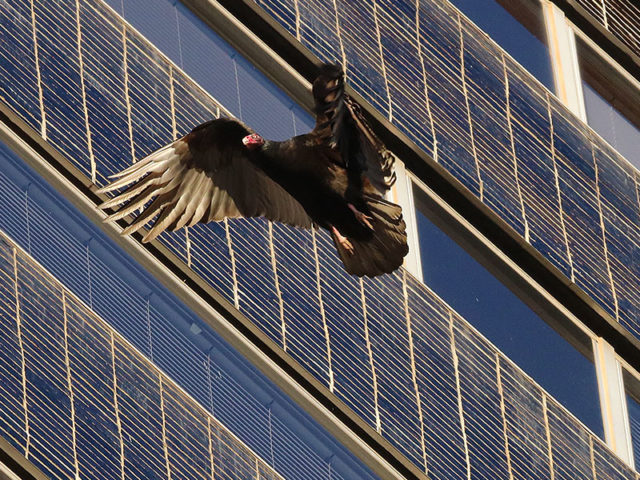

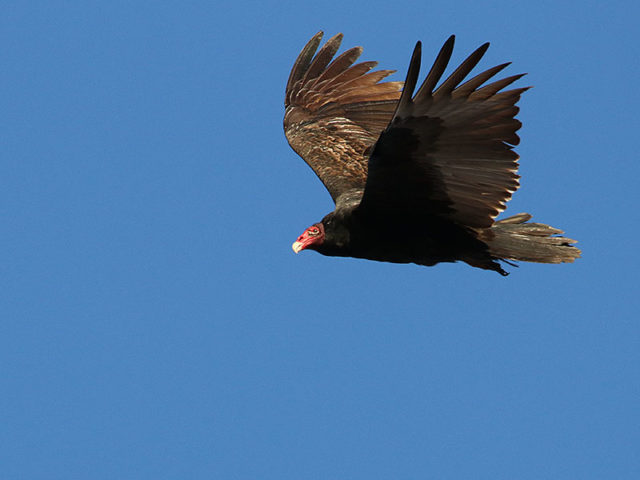
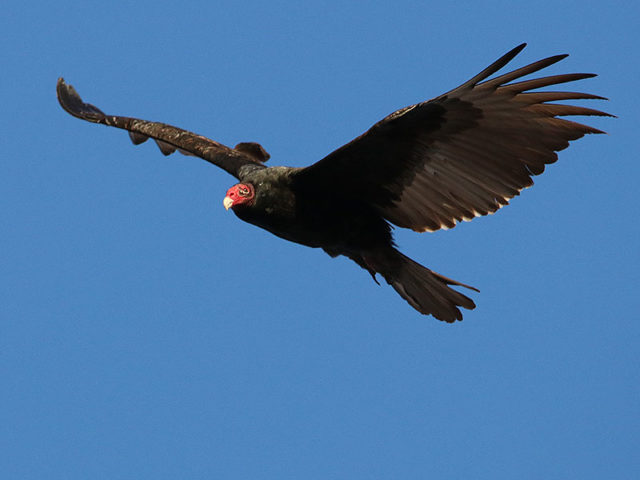
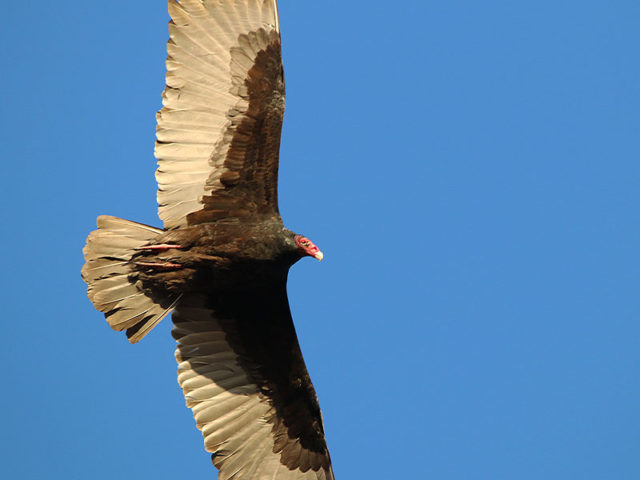
them to locate roadkill and other carrion
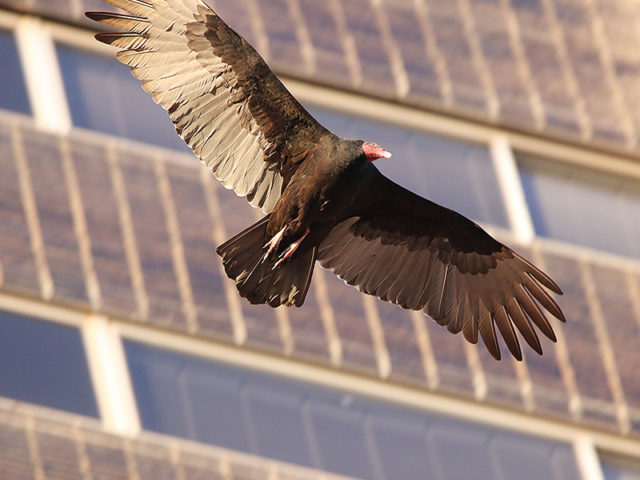
a prime carrion find from their Turkey Vulture friends

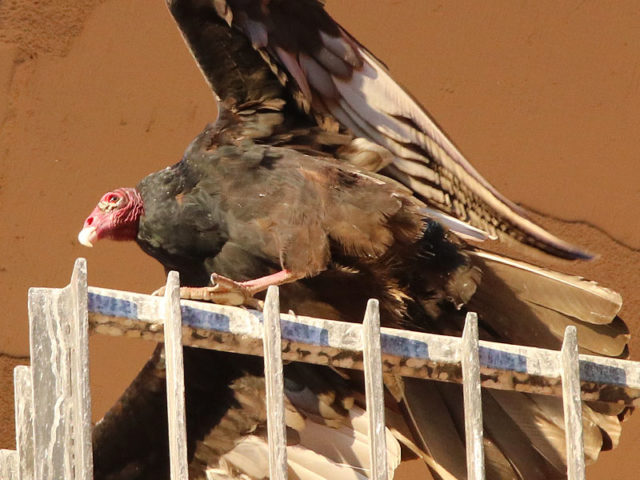
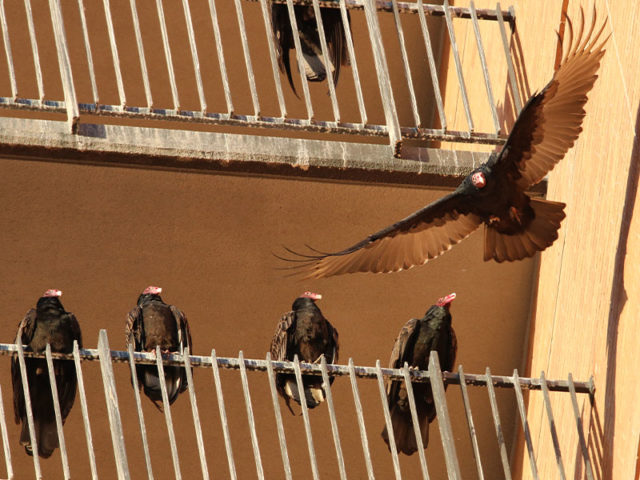
Can you imagine spending a long, hard day in class, and then coming home to your dormitory, only to find a scene like this just outside your window? I’m not sure how the university feels about this situation. If anyone has additional information, please drop me a line and fill me in… chris.dfwuw@gmail.com. Thanks!
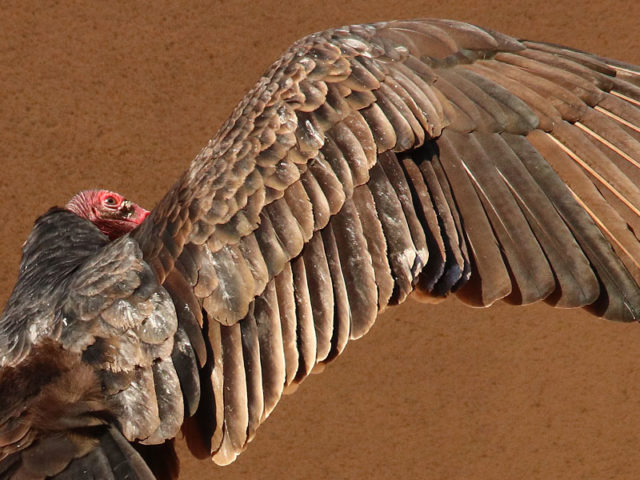




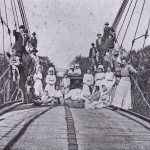

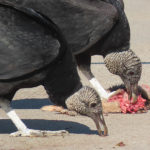
Wow, I really loved this photo journalistic expose in one of my favorite birds. Fantastic photos. I am pretty sure the university hates them, and the acidic mess their dropping make. Most people don’t like vultures, but they are extremely important environmental participants, and beautiful to watch soaring high soaring high in the sky. They have slowly been coming back into the Chicago region, and although mostly observed in spring, I actually had one above my back yard for a few days in late summer too. What a surprise. They love soaring above the expressways out in the midwestern farm lands. I saw many in northern Indiana this past September when I took a trip.
Is there any way to subscribe to your blog? I did not see a “subscribe“ button.
Wow you are a wonderful photographer! Thank you so much for this story of the vultures’ behavior through pictures. Also, after looking at all these photos and descriptions of their activities, I am now sure I have been correctly identifying all the soaring birds over College Station as black vultures.